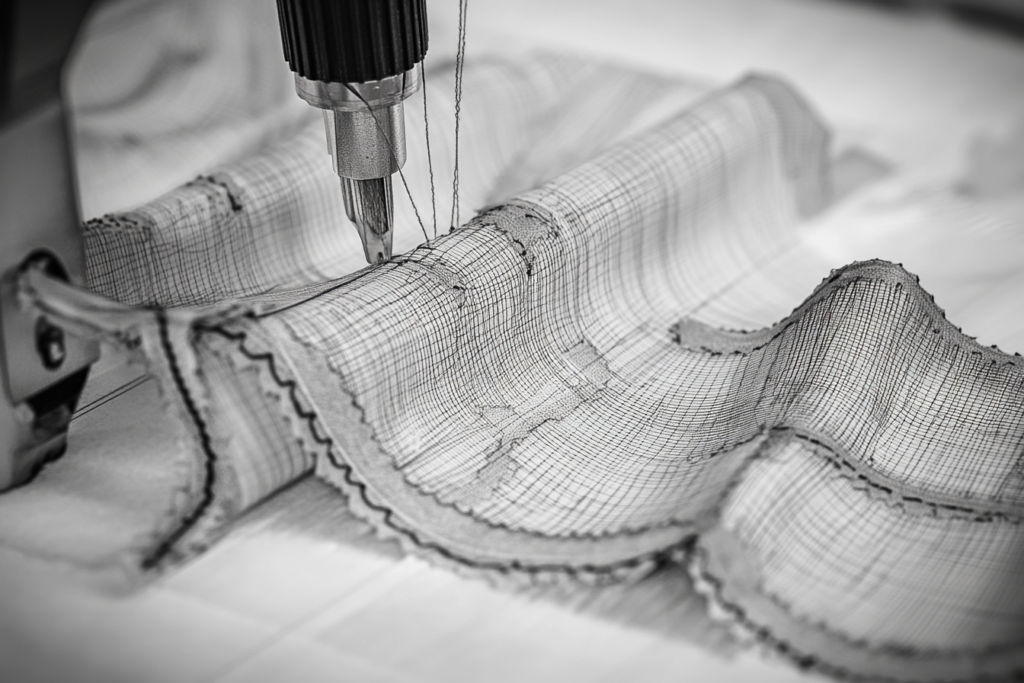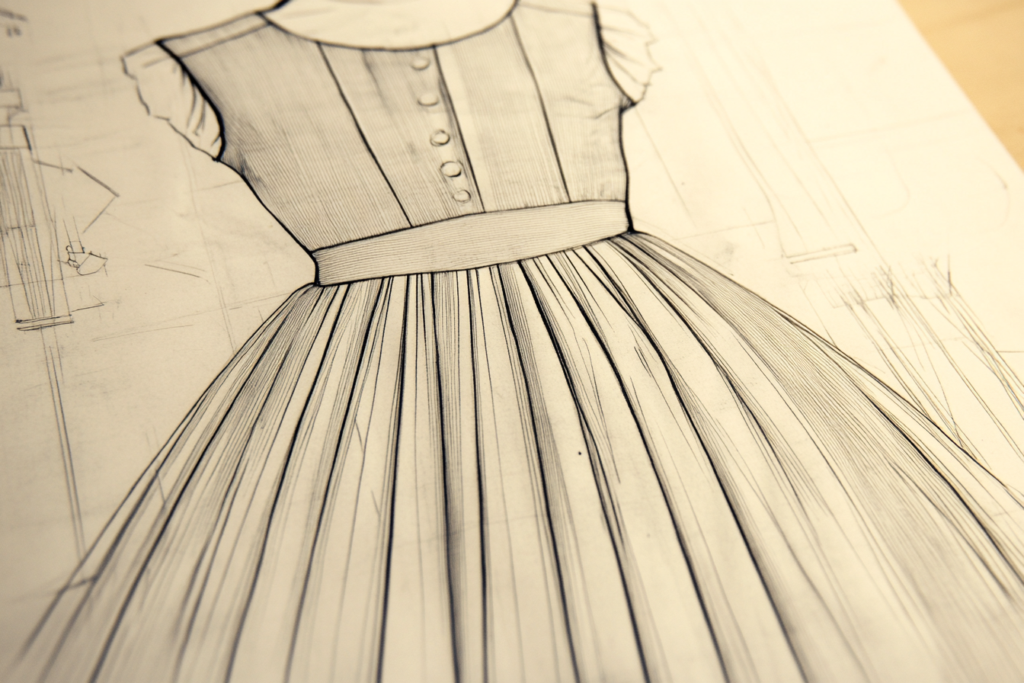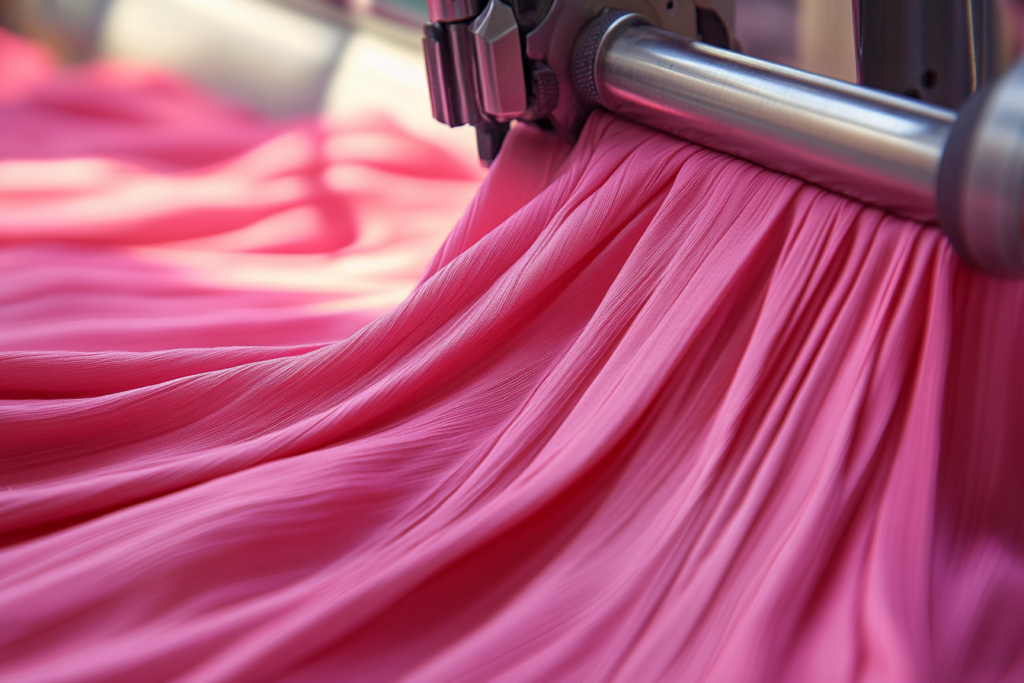Introduction: What is Easing in Fashion Design?
Easing is a sewing technique used to gently gather fabric without creating visible pleats or wrinkles. It’s commonly employed in areas of a garment that require shaping, such as sleeve caps and princess lines. Unlike pleating, where fabric is intentionally folded into regular pleats, easing involves gathering the fabric ever so slightly to fit a curved seam. The result is a smooth, smooth finish without the bulk or obvious wrinkles that can occur with other techniques.
This method is essential for creating clean lines and a professional finish, especially in areas where precise shaping is necessary. By evenly distributing the fabric, easing allows the garment to comfortably conform to the body while maintaining a sleek silhouette.


How Does Easing Work?
The easing technique works by gathering excess fabric along the edge of a piece of material. Here’s a step-by-step guide to how it’s done:
- Stitching:
- A long running stitch is sewn along the edge of the fabric where the gathering needs to occur. This is usually done on the seam line or within the seam allowance.
- Pulling the Threads:
- After the running stitch is complete, the threads are gently pulled to gather the fabric. The gathering should be light and even, ensuring that no sharp folds or wrinkles appear.
- Evening Out the Fabric:
- Once the fabric is gathered, it’s carefully spread out to ensure that the gathers are evenly distributed along the seam. This helps the fabric conform smoothly to the curve without puckering.
- Sewing:
- The gathered fabric is then stitched into place as part of the seam, allowing the shape to naturally follow the curve of the body, whether that’s in the sleeve cap, princess seam, or another curved area.
Common Uses of Easing in Garment Construction
- Sleeve Caps:
- Easing is frequently used in the construction of sleeve caps, especially in set-in sleeves. The fabric at the top of the sleeve is eased to match the curve of the armhole, allowing the sleeve to fit comfortably without creating unsightly wrinkles.
- Princess Seams:
- Princess seams, which create a form-fitting shape along the sides of a garment, often require easing to gently shape the fabric along the curved seam. This allows the fabric to conform to the body’s natural contours smoothly.
- Necklines and Armholes:
- Easing can also be used around necklines and armholes to ensure that the fabric fits properly without creating unnecessary fullness or bulging.
- Skirts and Dresses:
- For garments like skirts or dresses that require a smooth fit, easing is often used to gather fabric at waistlines or seams, allowing the garment to drape smoothly over the body.
Why is Easing Important in Fashion Design?
- Smooth Fit:
- One of the key benefits of easing is that it allows for a smooth and fitted garment. It ensures that the fabric follows the natural curves of the body without creating any unwanted bulk.
- Professional Finish:
- Proper easing contributes to a polished, high-quality look. It prevents the fabric from bunching or puckering, resulting in a sleek, well-constructed garment.
- Comfort and Mobility:
- By gently easing the fabric to fit the body’s shape, designers can enhance comfort and mobility in garments. This is especially important in areas like sleeve caps or princess seams, where movement is essential.
- Design Flexibility:
- Easing is versatile and can be used in a variety of garment types, from casual wear to formal attire. Its ability to shape fabric without visible folds makes it an ideal technique for creating garments with a clean, modern look.
Easing vs. Pleating: What’s the Difference?
While easing and pleating both involve manipulating fabric to achieve a desired shape, the key difference lies in the result:
- Easing: The fabric is gathered slightly and evenly, creating a smooth, soft curve without visible folds or wrinkles.
- Pleating: Fabric is intentionally folded into neat, visible pleats, typically used as a decorative element or to add fullness.
While pleating is often used for aesthetic purposes, easing is more about achieving a natural, smooth fit. Both techniques have their place in fashion design, but easing is specifically used to maintain a sleek, tailored appearance.
Conclusion: The Art of Easing
Easing is a vital technique in garment construction, particularly when shaping areas such as sleeve caps and princess seams. By gathering fabric without creating visible wrinkles, easing ensures a smooth, tailored fit that follows the body’s natural curves. It allows designers to create garments that not only look polished but are comfortable to wear as well. Whether you’re working on a custom dress or a casual top, mastering the technique of easing is essential for achieving professional, high-quality results.



